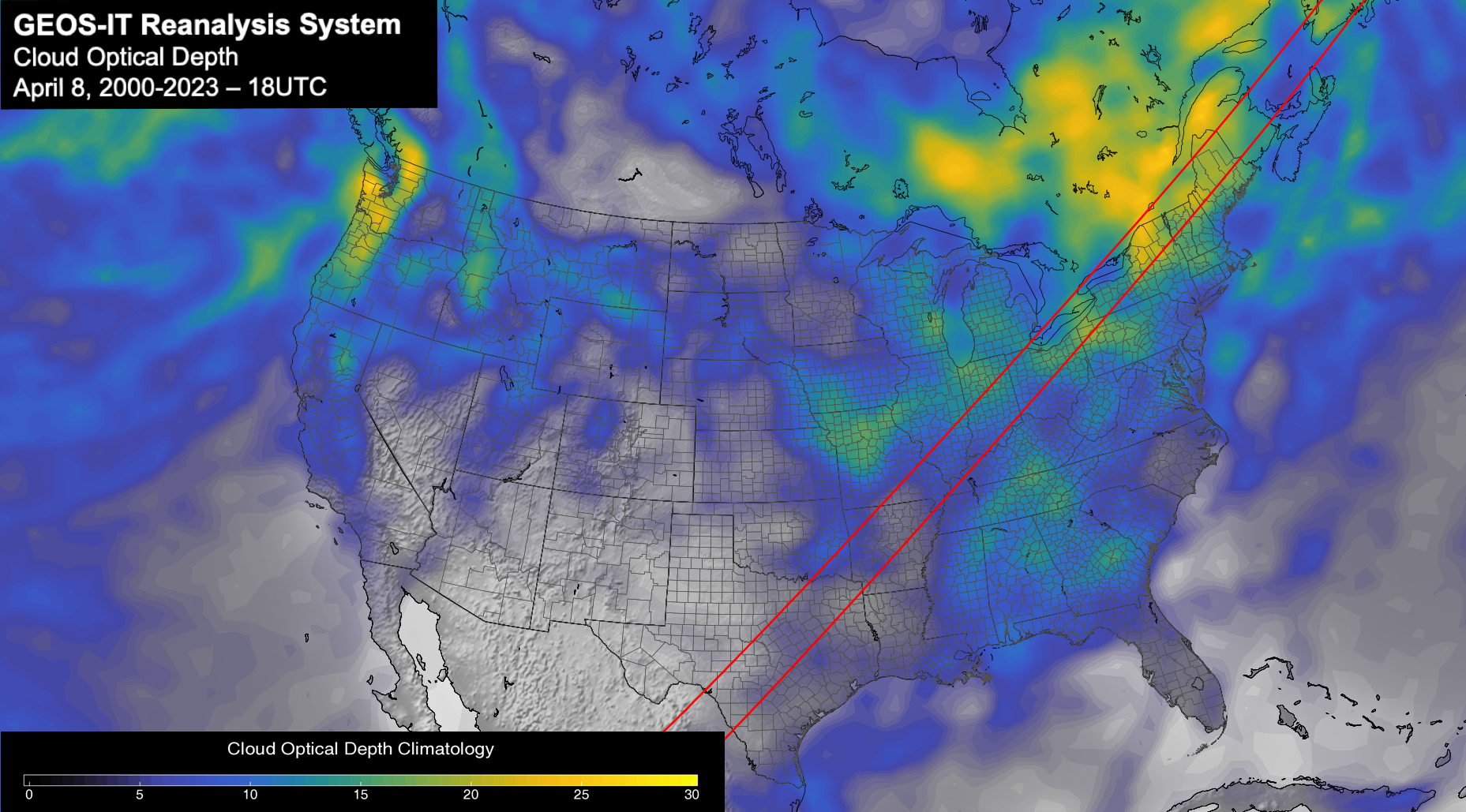April 2024 Solar Eclipse – Clear or Cloudy Skies?
On April 8, 2024, a second total solar eclipse in the span of seven years will cast a shadow across a path along a stripe of the United States. For the upcoming eclipse, there will be an even longer duration of totality, nearly five minutes, when compared to the total solar eclipse of 2017. NASA’s Global Modeling and Assimilation Office (GMAO) researchers have been studying data from their numerical weather prediction models to help provide guidance as to where the best viewing, from a sky condition perspective, will be.

For the upcoming solar eclipse, the path of totality over the U.S. will fall along parts of thirteen states stretching from Texas in the south to Maine in the north. We have used modeled cloud cover for the afternoon of April 8 for the years spanning the year 2000 through 2023 from its GEOS-IT Reanalysis System. When compiling this average, it gives a profile of where along this stripe might be expected to have more or less cloud cover, from a statistical standpoint. For this day, it shows an increasing percent of cloud-cover amount climatology as one moves further north and east along the path of totality. More specifically, the south-central portion of Texas has the lowest cloud cover average at around 40%. Then, moving northeast along the path of totality, this number increases to a maximum average cloud cover of about 70% approaching the Great Lakes and northern New England.
While your chances for clear viewing are statistically better over Texas than, say, in the path of totality over the Great Lakes and New England area, the weather pattern on April 8, 2024 itself will ultimately be the deciding factor on where cloud cover will be distributed. This means it is entirely possible to happen upon a weather day leading to spectacularly clear skies over the northern latitudes, as well as it being possible clouds obscure the viewing southward into Texas. Because the gradient of average cloud cover ranges from roughly 40 to 70% from least to most over the path of totality, there is no one location that either guarantees a “slam-dunk” clear sky day, nor one that can be completely written off as having a chance of seeing this rare celestial event.


